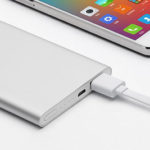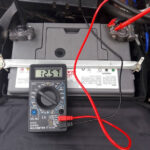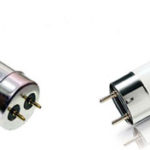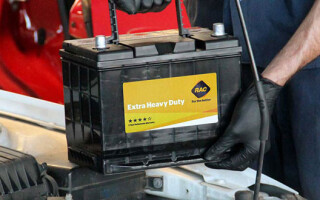The car battery has a certain service life, at the end of which the battery gradually begins to fail. As a result, at the most inopportune moment the car can simply stop starting. This means that postponing the replacement of the battery is no longer possible. The procedure for replacing the old battery with a new one does not require a trip to the service: a new battery can be installed by yourself in a short time.
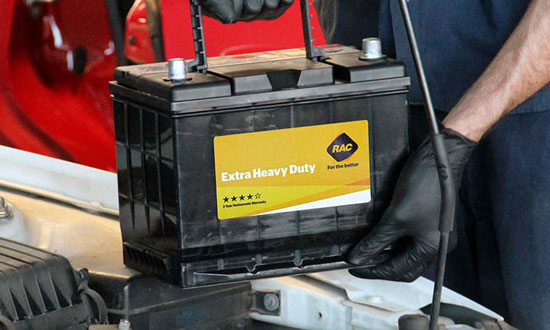
Contents
Safety precautions
Replacing a battery consists of three basic steps:
- preliminary preparation;
- removal of the old battery;
- installation of the new battery.
Do not neglect the preparatory stage, as the safety and convenience of the upcoming work on the replacement of the battery depends on it. So, before you to replace the battery, you should perform a few simple steps.
- Choose a suitable flat area for the work, which is far enough away from other vehicles.
- Turn off the engine and let it cool down, remove the key from the ignition, put the car on the parking brake.
- Prepare the necessary tools: an open-end wrench, a socket wrench, a screwdriver, and sandpaper or a special brush to clean any oxide residue from the terminals.
- Wear thick rubber gloves to protect yourself from the electrolyte. An old battery may have damage to its case which allows acid to leak through. You may get a chemical burn if you come in contact with it.
Once you have completed the simple preparations and if all safety precautions have been followed, you can begin to remove the old battery.
Removing the old battery
The next stage of the work in car battery replacement - Removal of the failed battery. A simple sequence of steps should be followed for the removal.
Step 1. Disconnect the terminals. Usually you need to use a 10 wrench for this, but different batteries may have different threads. Therefore, it is best to choose a wrench with interchangeable heads.
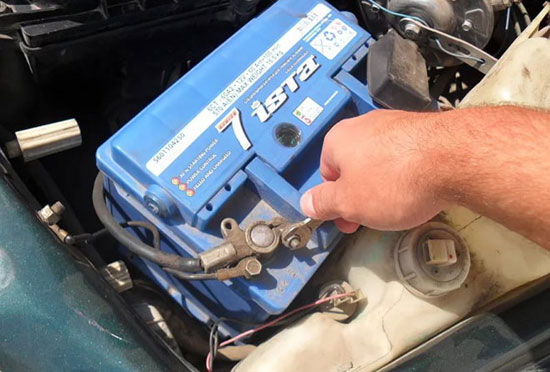
Auto electricians follow a certain sequence of terminal removal, starting with the minus terminal first. The reverse order of terminal removal can cause a short circuit.
Step #2. Removing the battery. Features of removing the battery depend on different models and brands of cars. In some cases, it is enough to pull apart parts of the casing that protects the battery, and by pulling the handle, remove the battery. In many modern cars, the battery is attached to the bottom of the shroud for a more secure fit. In that case, it will take a little more time to unscrew this nut.
IMPORTANT!
Remove the battery from its place of installation should be slow and careful, since the weight of the battery can weigh up to 20 kilograms. If necessary, it is better to ask for help.
How not to confuse the settings of the electrical equipment?
Replacing batteries in modern vehicles has a peculiarity. After replacing the battery, their owners may encounter the problem of the on-board computer and other electrical equipment, which is quite problematic to restore. However, it is better to prevent the problem than to waste time in solving it later.
There are two possible ways to avoid losing settings.
Option #1: Use a backup battery. If possible, when replacing the battery, it is advisable to connect a backup power source equal in capacity to your battery. For example, you can use the cigarette lighter wire to connect a second battery. In this case, the replacement of the battery will go painlessly for the settings of the electrical equipment.
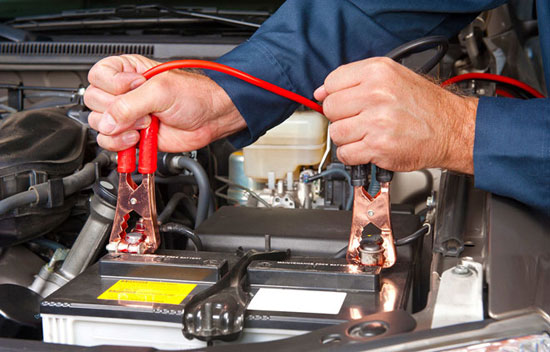
Option #2. Copy all the settings to a medium. To do this you will need to:
- remove key from ignition;
- Read the on-board computer settings onto the medium;
- memorize or fix all access codes to the audio system (otherwise it will be very difficult to unlock it later)
- Copy all other user data.
IMPORTANT!
To find out if the settings of the electrical system reset when replacing the battery in your car, please refer to the owner's manual or consult the internet. If you have any doubts about the possibility of a messed up settings, it is best to entrust the battery replacement to professionals at the service center.
Installing the new battery
After the old battery has been safely removed, you can begin to install the new battery.
- Beforehand, it is advisable to inspect the battery site by removing dirt and debris with a soft cloth.
- Sand the inside surfaces of the wire lugs with sandpaper - this will ensure good contact with the terminals. The wires can also be treated with a water repellent.
- The terminals themselves, which may have oxidized over time, are cleaned with a toothbrush dipped in a solution of baking soda.
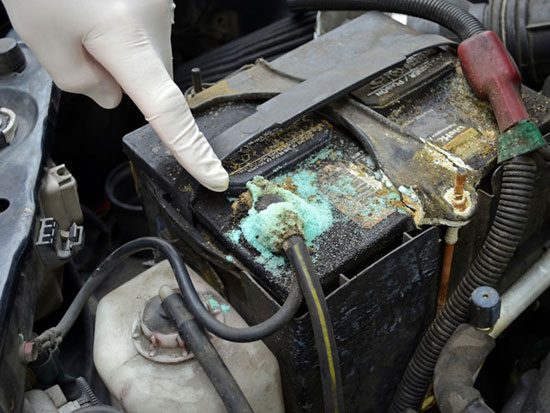
After that, you should install the new battery in place, fixing it and checking how tightly the battery fits into the groove. The battery terminals are connected in the same order, "plus" first, then "minus". Finally, lithium grease may be used to prevent oxidation of the contacts.
Finding polarity
It is very important not to mix up the polarity when installing a new battery, otherwise you may face serious problems - malfunction of the onboard computer, short circuit and fire.
To avoid such troubles and battery replacement goes painlessly, it is important to be extremely careful.
The most common patterns of current leads are forward and reverse polarity.
- Straight polarity of the battery is also called the Russian polarity. It is denoted by the symbol "1". With this type of polarity, the positive current lead is on the left and the negative current lead is on the right.
- The reverse polarity is called the European polarity and is denoted as "0". The positive terminal is on the right and the negative terminal is on the left.
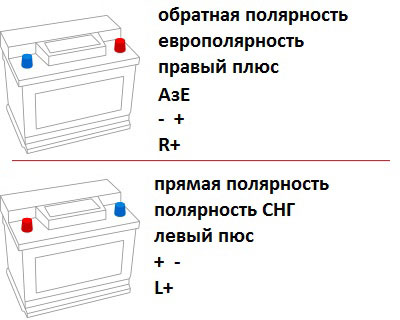
Some batteries may not have polarity markings on them. In this case, you can use one of the methods listed above to determine the correct polarity.
- Current Lead Diameter. Measuring the diameter of the battery terminals can help with determining polarity. It is important to remember that positive leads are always larger in diameter than negative leads.
- Raw potatoes. Cut the potato in half, stick the bare wires from the battery into one of the parts at a distance of 5-10 mm from each other. After a few minutes a green circle will form around the positive lead.
- Tap water. Pour regular tap water into a mug. Attach two different-colored wires to the battery current leads, with the bare ends dipped into a container of water. As a result of electrolysis on the minus lead will begin increased gassing.
IMPORTANT!
The absence of polarity markings on batteries - a rare phenomenon. Most often, manufacturers mark the polarity with "+" and "-" signs, or with color (positive polarity - red, negative polarity - blue or black).
How to tighten the terminals properly?
Do not apply excessive force when tightening the terminals. Over-tightening a terminal can lead to micro-cracks around the conductors, through which the electrolyte will evaporate later. This means that the terminals will inevitably oxidize.
At the same time, simply throwing the terminals over the leads, as motorists sometimes do, is not enough either. In this case, the contact between the current lead and the terminal will be unreliable. This will cause the poorly contacted elements to heat up. And when driving on a rough road, a badly tightened terminal can jump off and short out to the ground.
Therefore, you must tighten the terminals with moderate force to make them secure but not excessive.
Conclusion
Replacing the battery in a car is not a complicated procedure. However, if you are installing a new battery for the first time, it is very important to properly prepare for this procedure. And the old battery, which has served its useful life, after replacement, should be handed over for disposal in a special collection point, organized in auto stores or car service centers.
Related articles:

